- Personalization
7 B2B Personalization Examples for SaaS Businesses


As a SaaS business, you have the unique opportunity to leverage personalization in order to create deeper relationships and more engaging and tailored experiences for your customers.
When done right, personalization can improve customer engagement, boost conversions, and even increase customer loyalty.
By utilizing data that you already have on your customers, you can deliver content and features that are specific to their needs and interests.
In this blog post, we'll share 7 B2B personalization examples that you can use to take your SaaS business to the next level.
These examples will show you how personalization can be used to improve customer engagement, conversions, and retention.
By implementing even just one of these examples, you'll be able to set your business apart from the competition and build deeper relationships with your customers.
Importance of B2B Personalization in Today’s Competitive Environment
B2B personalization is one of the most important trends in today's competitive landscape, as it enables B2B companies to more effectively engage with their customers and tailor their marketing efforts to meet the specific needs and preferences of each individual customer.
At its core, B2B personalization relies on using contextual and behavioral data about individual customers to create targeted content and marketing messages that are tailored specifically for them. By leveraging this kind of targeted engagement, businesses can better connect with their customers, build long-term relationships, and ultimately drive greater sales results.
There are a number of key benefits associated with B2B personalization, including:
Increased Revenue: When businesses use personalized campaigns to reach out directly to their target audiences, they are much more likely to see an increase in their sales results. This is because customers are more receptive to personalized marketing messages than generic, one-size-fits-all approaches.
Improved Customer Engagement: By tailoring content and communications to suit the specific needs of individual customers, businesses can build stronger relationships with their customers and better engage with them on a personal level. This can lead to increased satisfaction, loyalty, and word-of-mouth referrals for your business.
Greater ROI: With targeted campaigns that leverage data about individual customers' preferences, interests, and buying patterns, businesses can achieve a higher return on their marketing spending while also driving greater sales success.
With the right tools and strategies in place, you can reap the many benefits of this increasingly important personalization trend.
B2B Website Personalization
In today's digital landscape, it is more important than ever to create personalized experiences for your customers. A B2B website personalization strategy can help you do exactly that. By incorporating customer data into your marketing campaigns, you can build stronger relationships with your customers and increase revenue and conversion rates on your website.
There are many benefits to B2B website personalization for both businesses and end users. For businesses, personalized websites can improve traffic and conversions by making it easier for visitors to find the information they're looking for and encouraging them to stay longer on the site. Additionally, through targeted marketing campaigns, businesses can use personalized websites to drive more sales by reaching their target audiences with highly relevant messaging.
For end users, personalization can also be very beneficial. By providing a more tailored experience, websites can help users find what they're looking for faster and more easily.
For example, if a customer has recently viewed a particular product on your site, you can use this information to display related products or special offers in their browsing session. Additionally, by tailoring your messaging to meet the needs and wants of different customer segments, you can create individualized experiences that will help you stand out from your competition.
Additionally, personalized websites can help to create a more enjoyable online experience for users by using engaging design elements like visual content or interactivity that encourage engagement with the site.
B2B Website Personalization Examples You Should Start Implementing Today
1. Hero Personalization
The hero section (above the fold of the website) is the first impression your customers have of your website, and as such, every element in the hero section needs to be perfect.
However, it's not the case for most of the hero sections.
The purpose of a hero section is to convert more visitors into leads by focusing on one offer and ensuring that the customer experience is tailored to their wants and needs.
Although the needs and wants are different from one customer to another, every visitor sees the same headline and message on the landing page.
Headline Personalization
Personalization is a powerful tool that gives the hero section a competitive advantage by dynamically adapting the headline.
Personalized headlines are more likely to capture the attention of your target audience, as they are designed to speak directly to their individual needs and interests. This means that potential customers will be much more likely to engage with your content and learn more about what you have to offer.
Overall, this can lead to higher conversion rates as well as higher engagement, as your audience feels that you truly understand their needs and are able to provide them with the solutions they are searching for.
Here is an example of headline personalization for different business verticals:
CTA Personalization
CTA personalization is another pillar of hero personalization.
The main purpose of CTAs is to get people's attention and entice them into taking specific actions, such as
signing up for a newsletter list,
downloading an e-book,
watching a video tutorial,
filling out a contact form,
etc.
CTAs are the perfect way to personalize your website and provide people with a clear path based on who is viewing your content.
You can create various CTAs based on different firmographic, behavioral, and psychographic data. Here are some examples of CTA personalization:
showing CTAs to visitors based on their sales funnel stage
showing specific CTAs to visitors that fit into your target customers
changing the CTA for customers and non-customers
Here is an example of CTA personalization for different business verticals:
Hero Image Personalization
The hero image is another part of the hero section of the website, along with the headline and CTA.
We all know that personalization is an essential part of any marketing strategy because people prefer personalized offerings over generalized information.
Tailoring your offerings around specific interests can make all the difference when trying to connect with your customers. Just like headline messages and CTAs, images are also playing a huge part in personalization.
Implementing image personalization will not only drive more conversions but also create an emotional connection with your customers that they won't find anywhere else.
Image personalization gives marketers an opportunity to craft their message to make it feel like it was created - especially for the person viewing it.
With image personalization, you can show different images of products or services depending on the visitor's location, age group, gender, or any other segmentation criteria.
Here is an example of hero image personalization for different business verticals:
2. In-Line Personalization
In order to be successful in today's digital world, it's more important than ever to target your customers with relevant pieces of content.
And one of the best ways to do this is through in-line CTAs.
In-line CTAs are links that are placed within the body of your content rather than in a separate area, such as the sidebar or footer. This ensures that they are seen by readers who are actually engaged with your content and not just skimming over it.
What's more, in-line CTAs are usually highly relevant to the topic at hand. This means that they are more likely to catch the reader's attention and encourage them to take action.
Here is an example of in-line CTA personalization: ebook download forms inside blog posts that are dynamically showing the most relevant ebooks on each blog post:
3. Navigation/Menu Personalization
Navigation personalization is a critical component of any successful B2B website. This feature enables companies to tailor their menus to the unique needs and preferences of their target audiences, helping them create a more engaging user experience that encourages visitors to explore and interact with the site.
There are several key benefits of navigation personalization in B2B websites.
First, it allows businesses to highlight important content that is most relevant to different groups of users.
Second, navigation personalization helps companies create a more engaging user experience by providing users with targeted content recommendations based on their previous browsing behavior. This makes it easier for users to find the information they are looking for while also encouraging them to explore different parts of the site.
Finally, navigation personalization can also be used to drive website conversion rates and sales by increasing awareness of specific products or services.
Here is an example of navigation personalization for users:
4. Social Proof Personalization
Social proofs on your website add instant credibility to the value you're promising. Companies are using different types of social proof across their website.
Although there are plenty of different types, here are three main social proof categories commonly used by companies:
customer testimonials
product reviews
customer logos
As competition for customer attention increases, companies are looking for new ways to stand out from the crowd. One way that businesses are using to achieve this is by personalizing social proofs on their websites.
You can personalize the examples of social proofs for each target audience by using relevant logos and testimonials to match their interests.
Therefore, for instance, visitors from the gaming industry can see company logos and testimonials from related gaming companies, while visitors from other industries see social proofs related to their industry.
Here is an example of social proof personalization based on industry:
5. Badge Personalization
At the core of any successful B2B marketing strategy is a strong, well-thought-out website that provides valuable information to prospects and customers alike.
One key element that can help you take your website to the next level is badge personalization, which allows you to dynamically tailor the look and feel of your site based on a user's individual preferences or behaviors.
There are many different reasons why you should start using badge personalization on your B2B website.
Perhaps the most important one is that it enables you to provide tailored content and recommendations to each individual visitor based on their unique preferences, interests, or buying habits. This not only helps increase engagement and conversions but also creates an overall more personalized experience for visitors – something that today's savvy consumers have come to expect.
Here is an example of badge personalization based on industry:
The Role of Personalization for Profitable Growth and Enhanced Digital Customer Experiences
While it's true that the current economic climate is challenging, there are still opportunities for businesses to grow and prosper.
Companies can position themselves for success in the months and years by focusing on personalization and profitability.
By definition, personalization is the process of tailoring content and experiences to meet the specific needs and preferences of an individual.
In today's hyper-competitive marketplace, businesses must go beyond simply providing generic products and services - they must provide individualized, tailored experiences that are relevant to each individual customer.
Start Personalizing Your Website for Better Customer Experiences
There is no question that in today's competitive business landscape, personalization is absolutely essential for driving better customer experiences and increasing revenue.
Personalizing your b2b website can help you build stronger relationships with your customers by tailoring your content and offers to meet their unique needs and preferences.
At its core, personalization involves using data about your customers' interactions with your website to create a more meaningful experience for them. This can be done through a variety of means, such as targeting specific audiences based on demographics or behavioral data or offering tailored content based on their history with your brand.
By personalizing your website, you are able to deliver more relevant information and offers to each individual customer, thereby making them feel valued and appreciated. This, in turn, can lead to higher levels of engagement, increased conversion rates, and, ultimately, more revenue for your business.
So if you haven't yet started personalizing your b2b website, it's time to start doing so right away!
By prioritizing personalization and putting your customers at the center of everything you do, you will be able to create better experiences and drive more growth for your business.
Get in touch to start creating composable personalization within your content workflow. In minutes
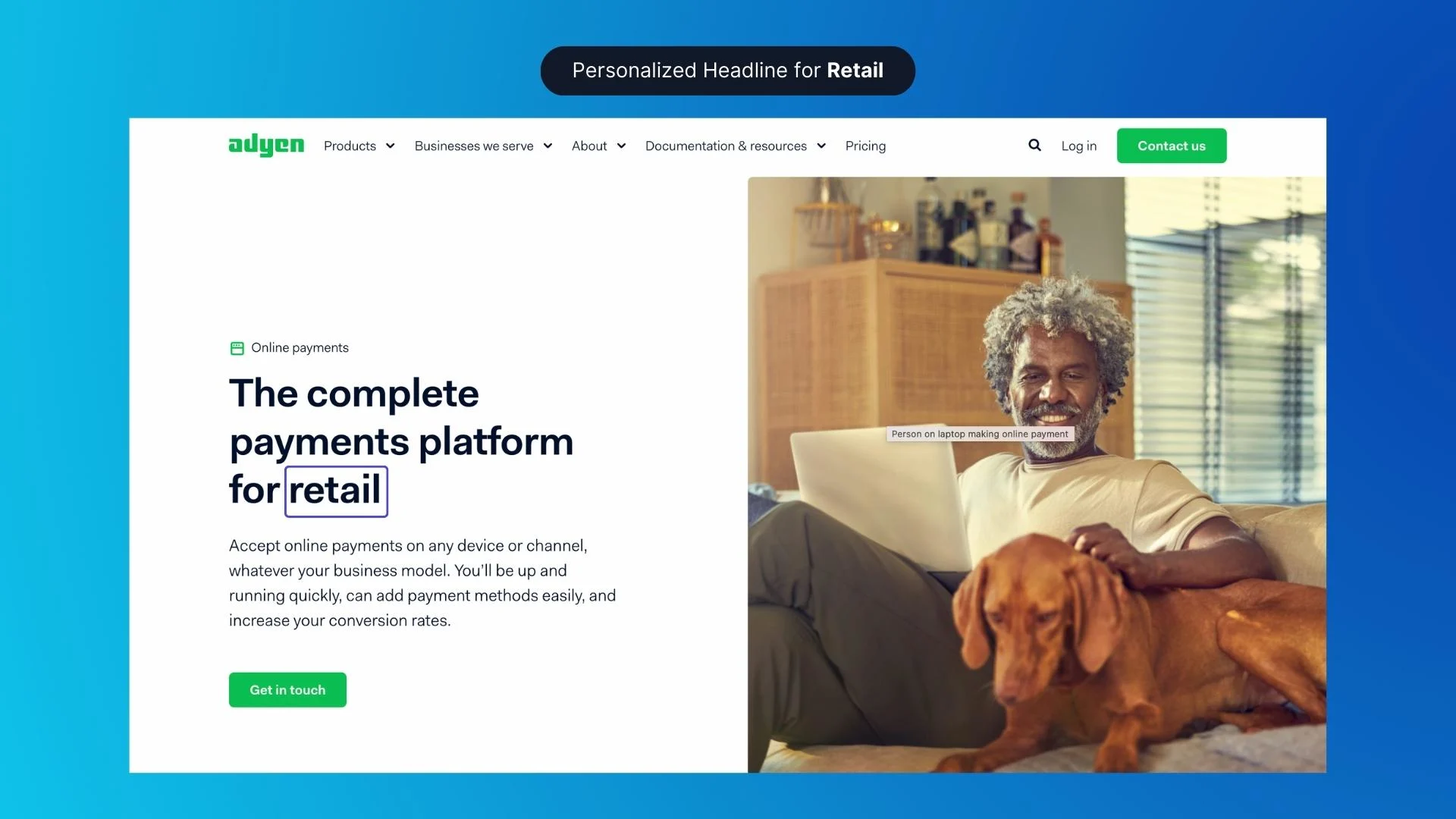
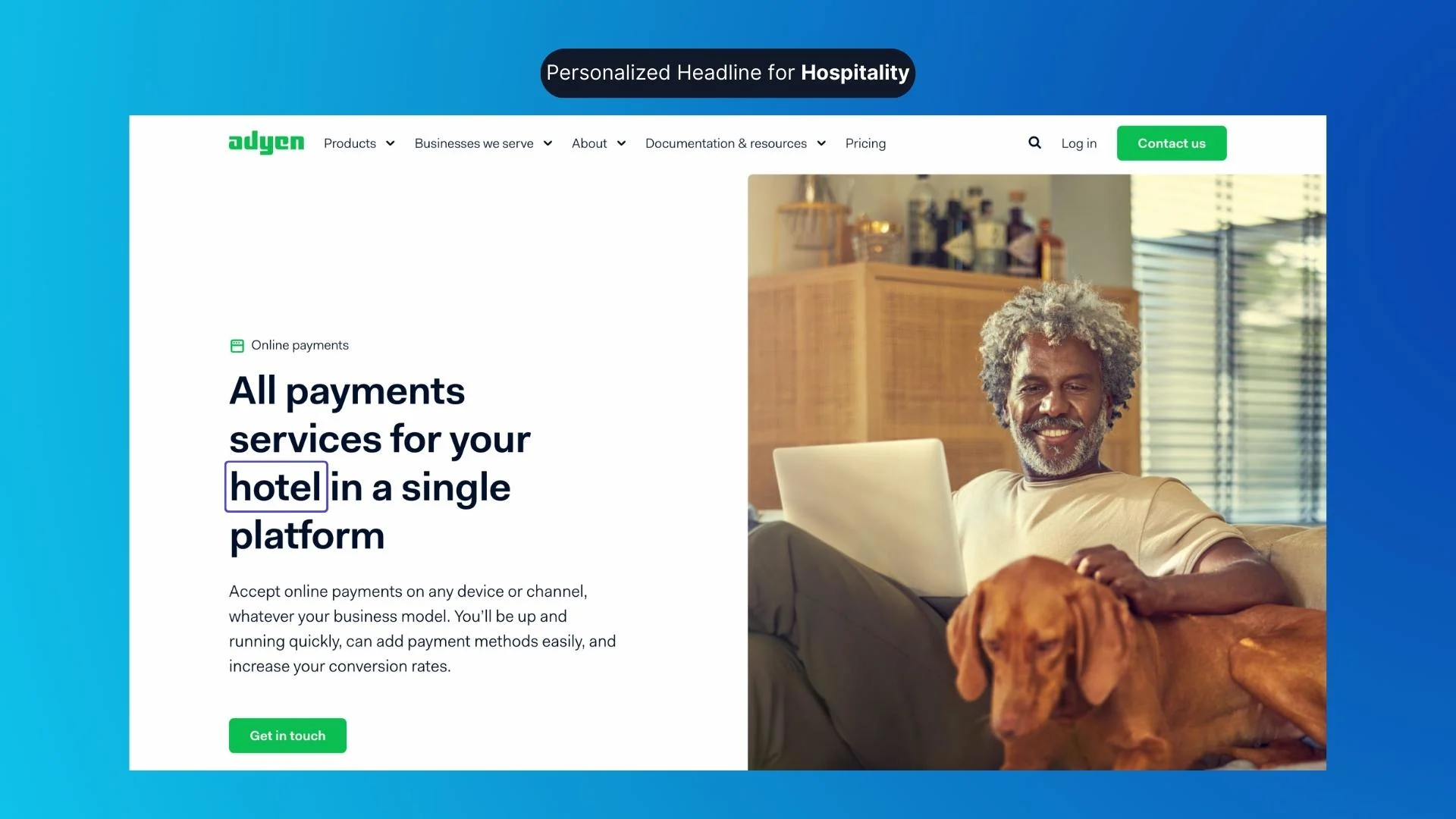
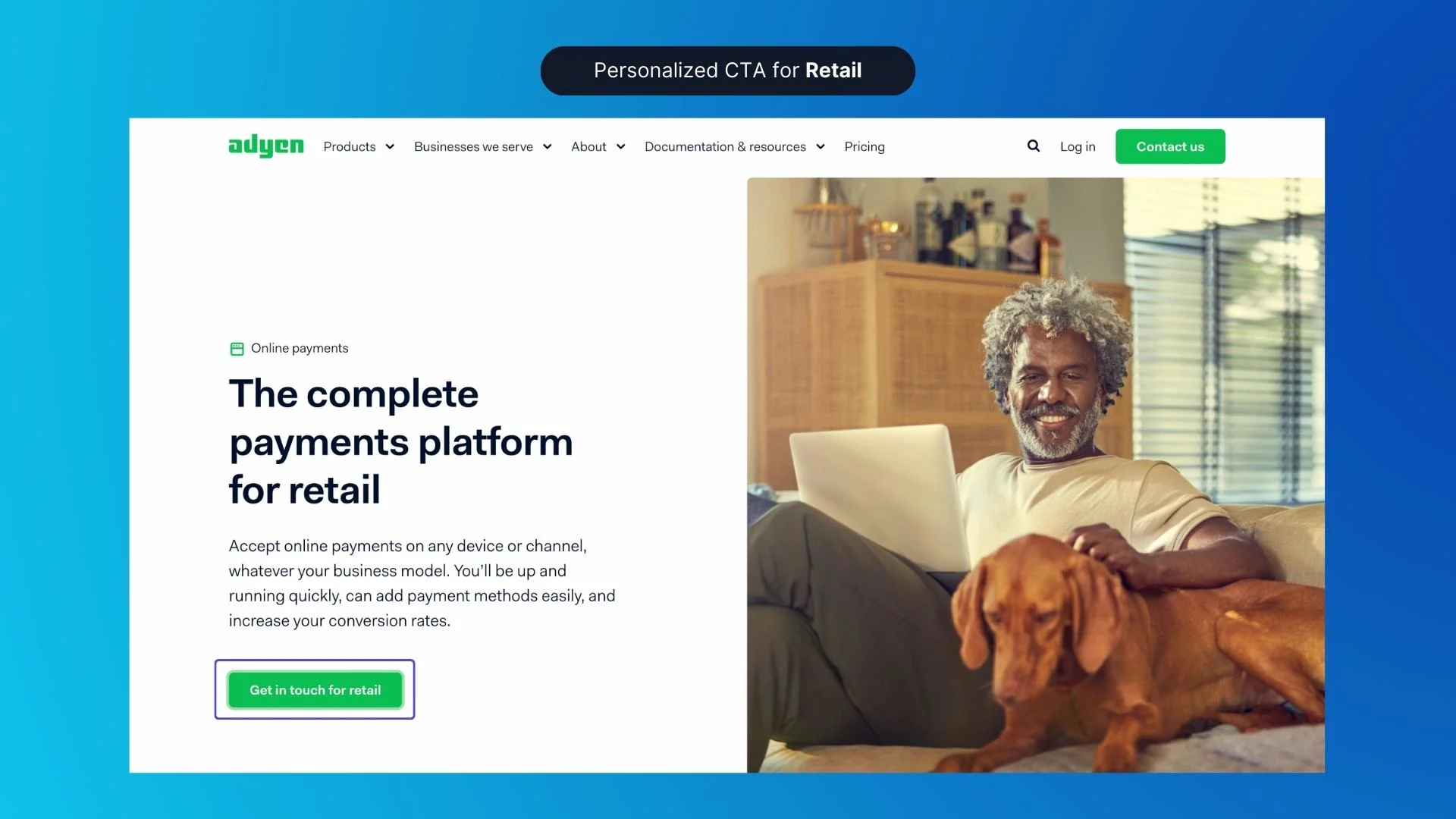
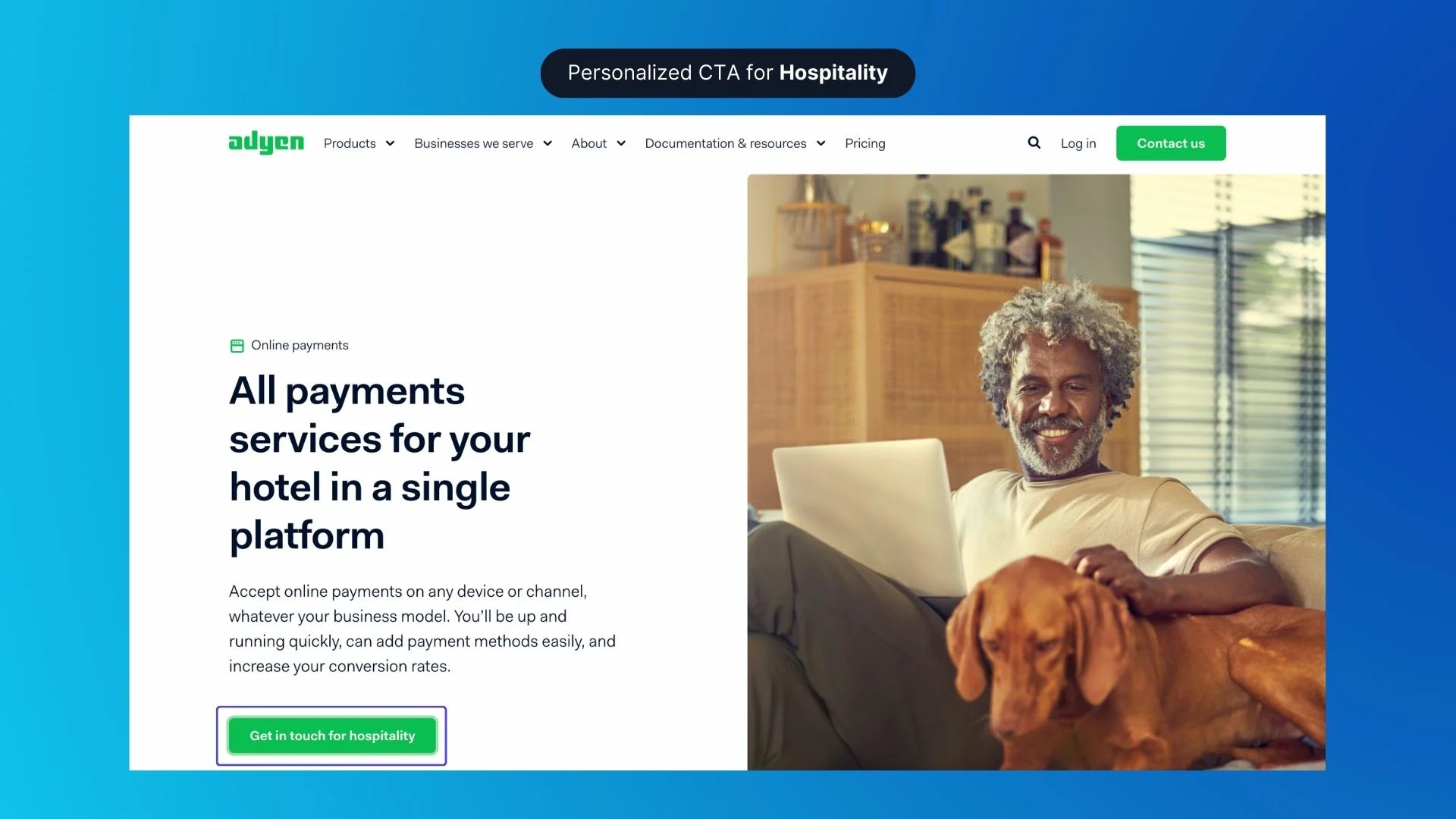
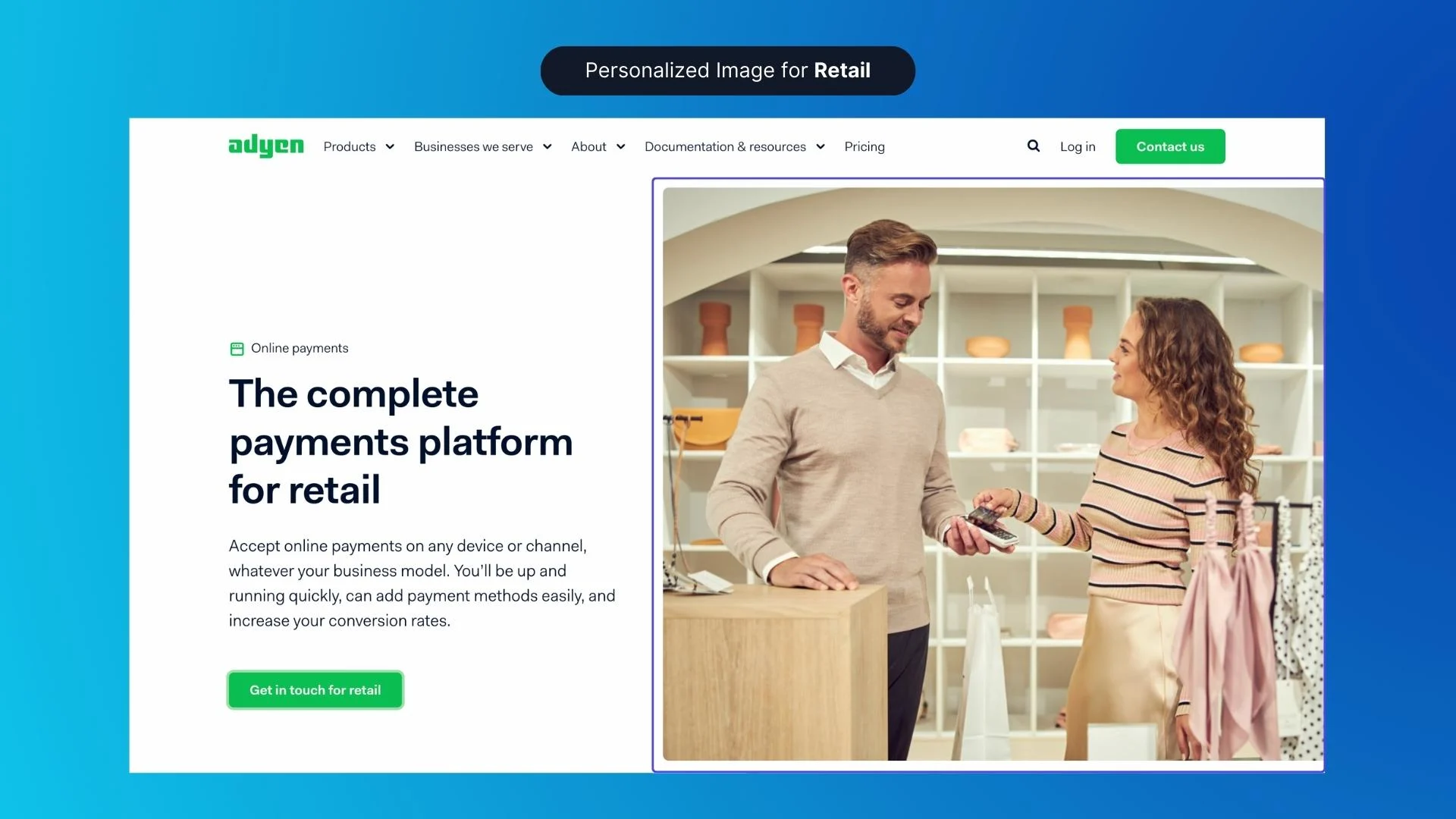
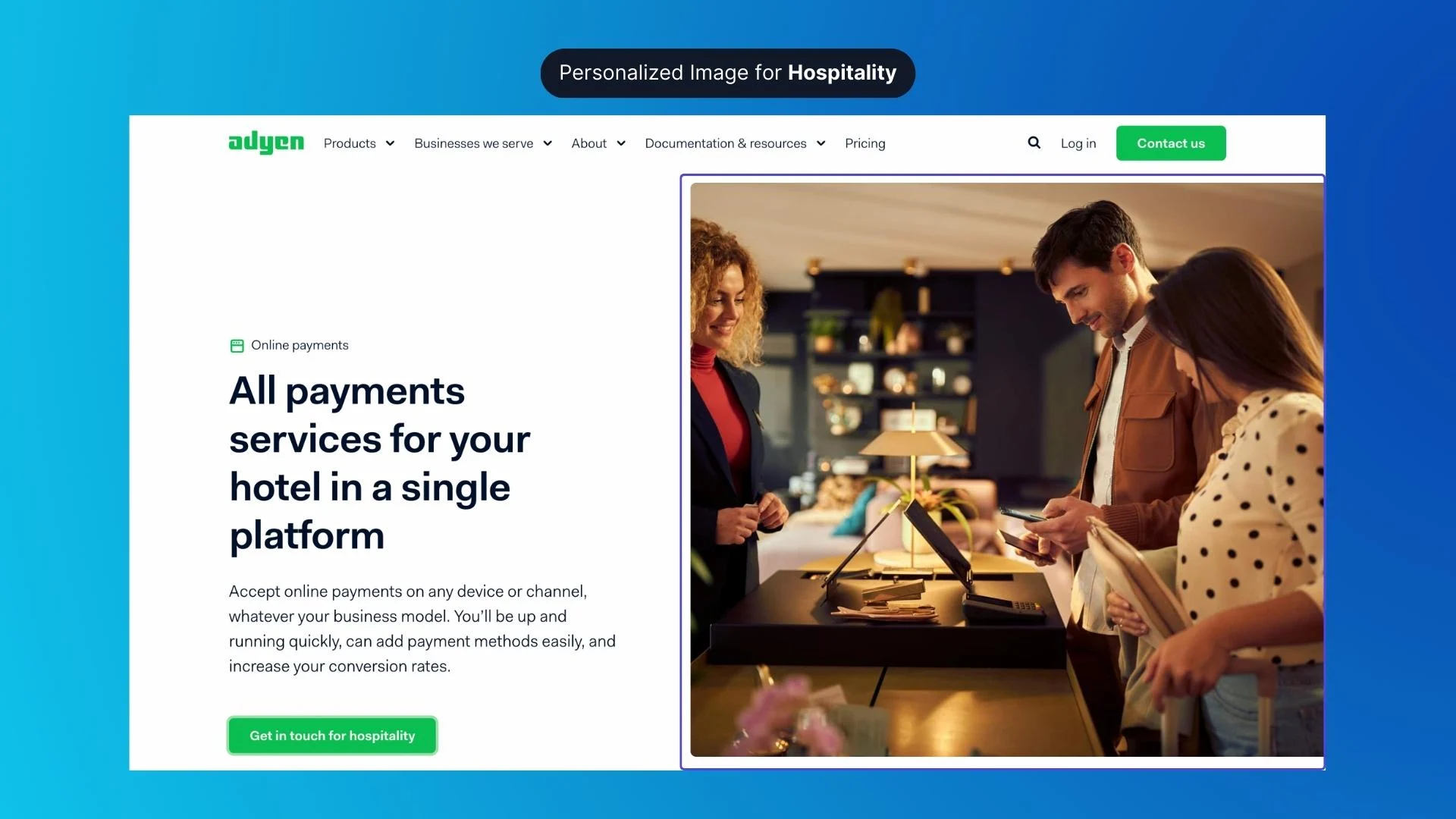
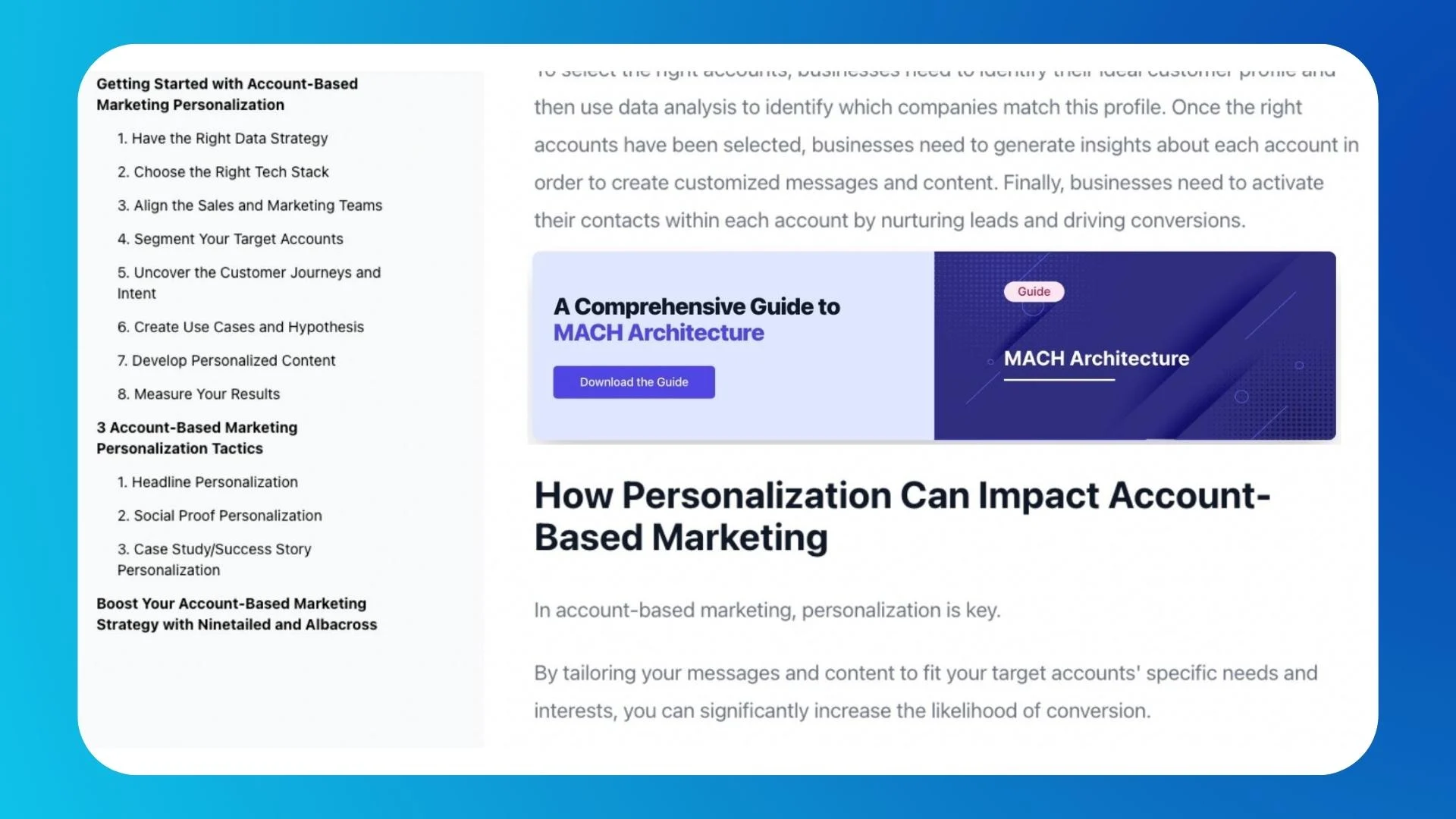
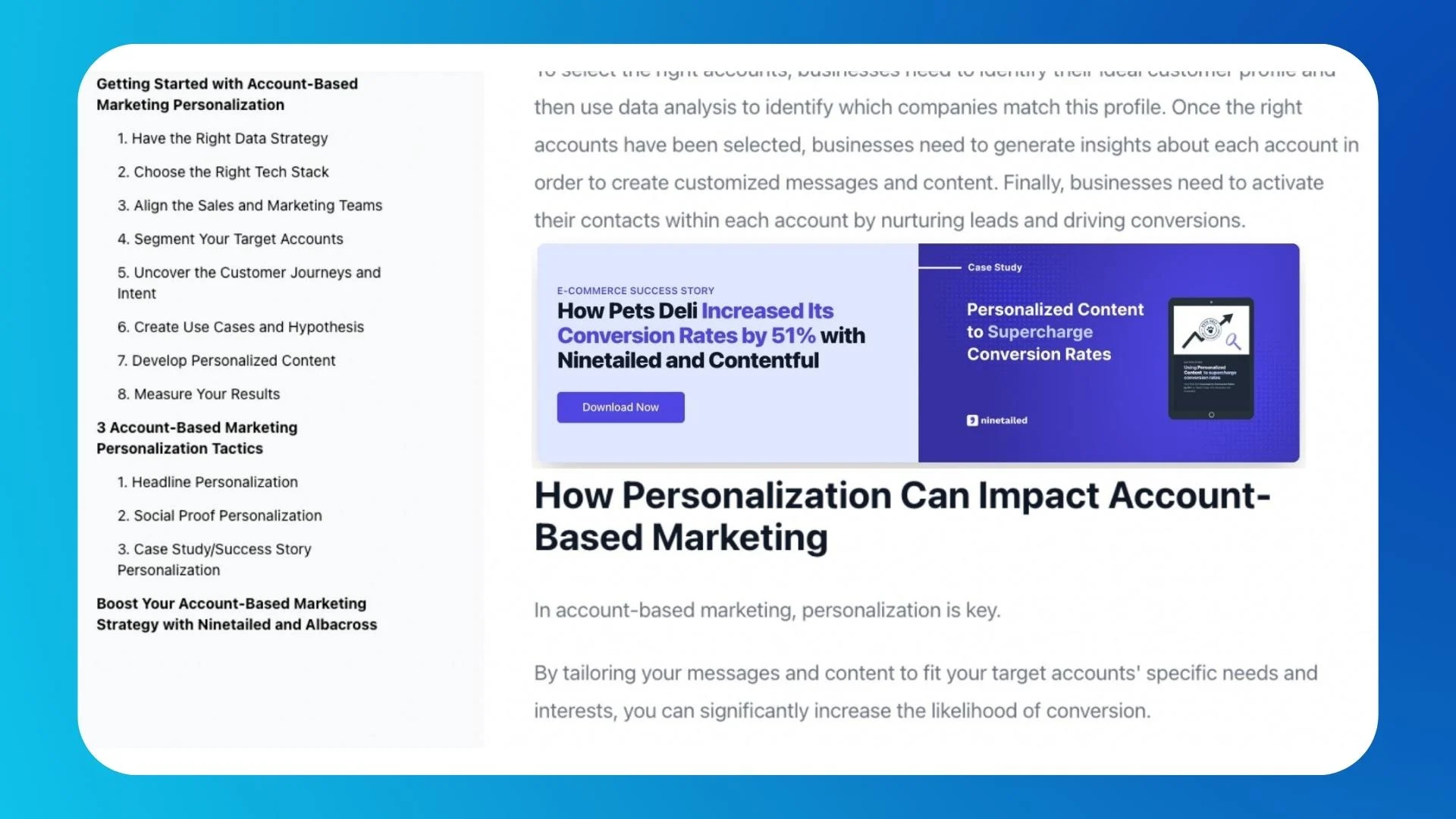
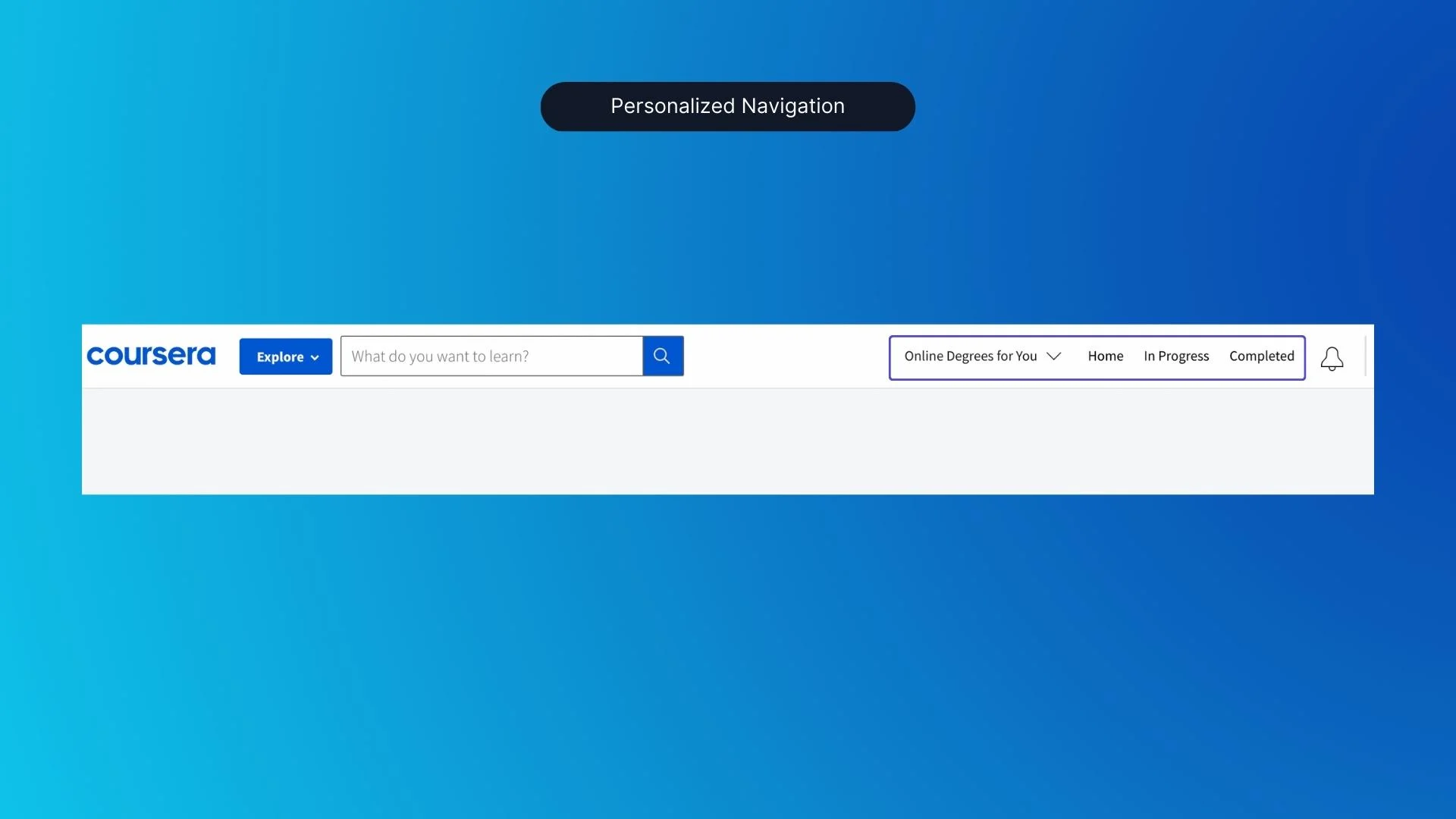
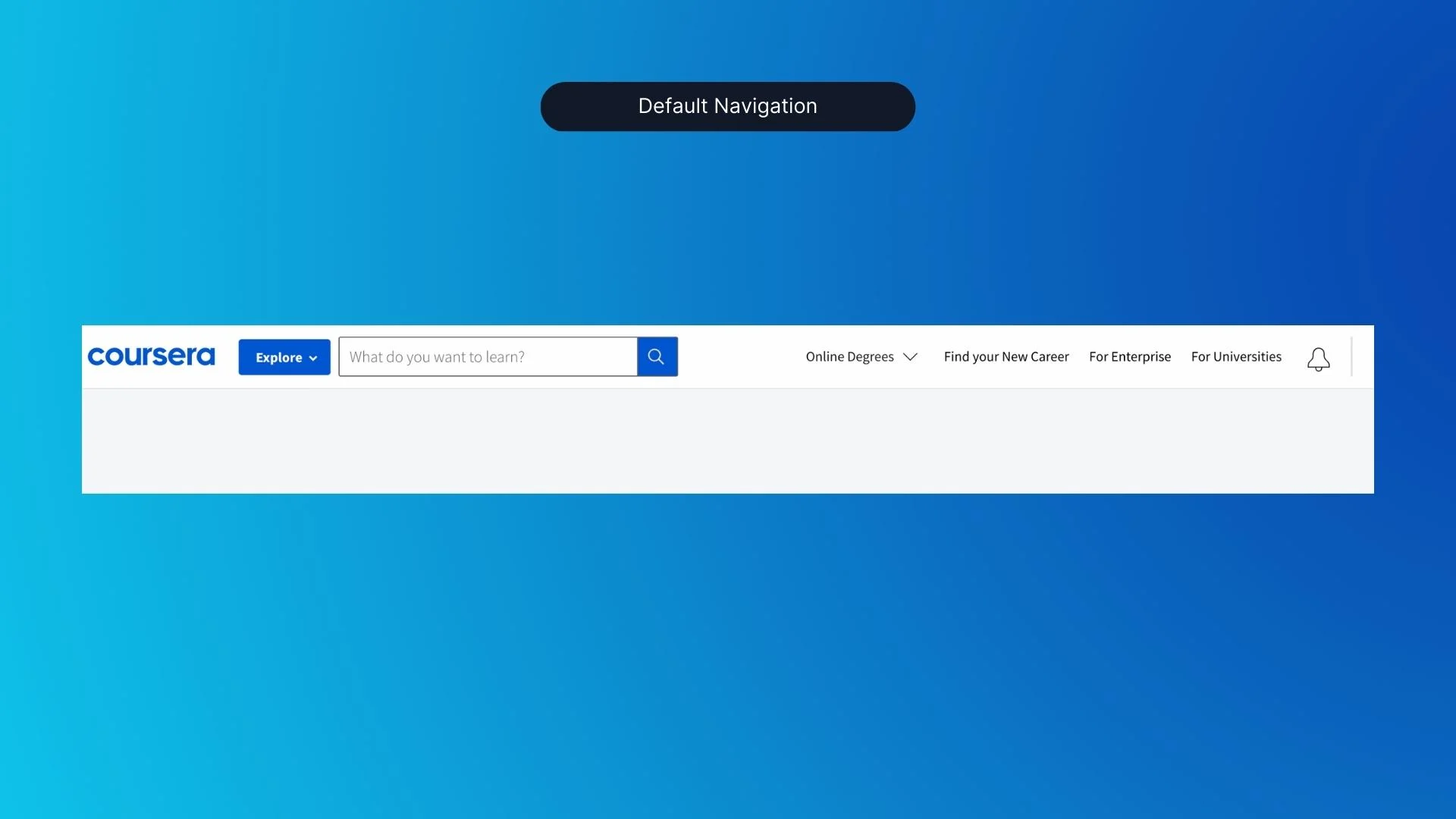
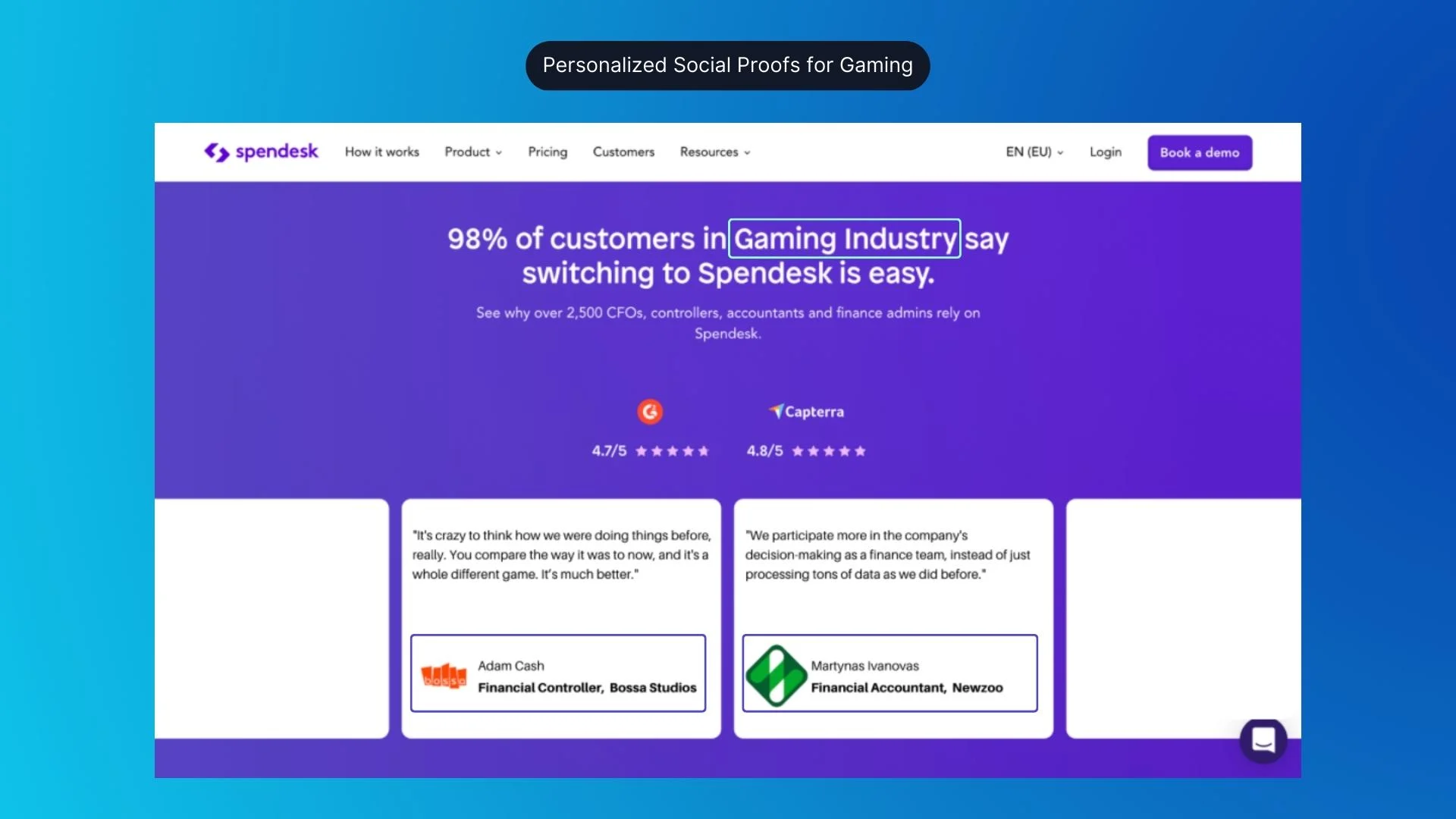
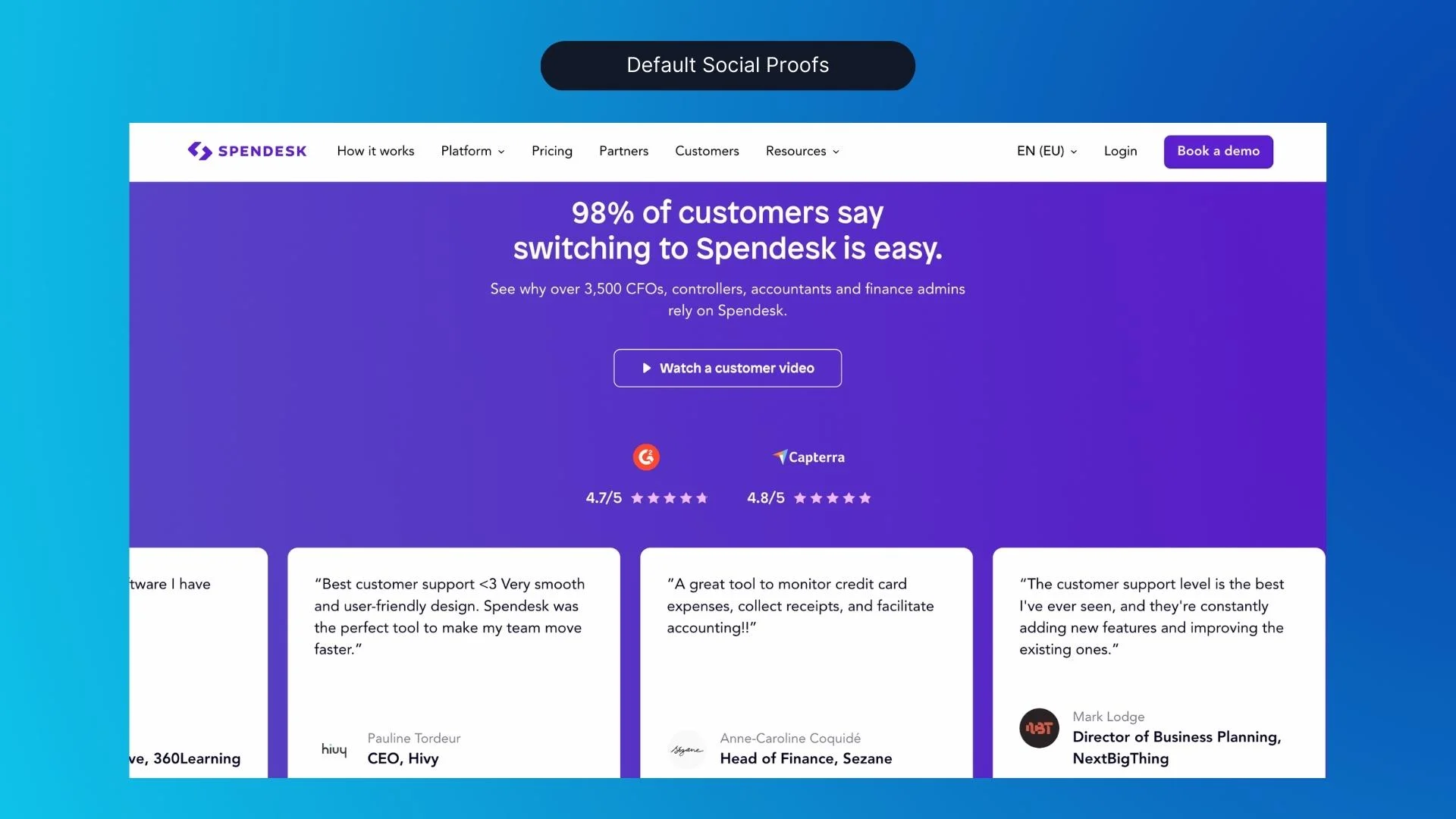
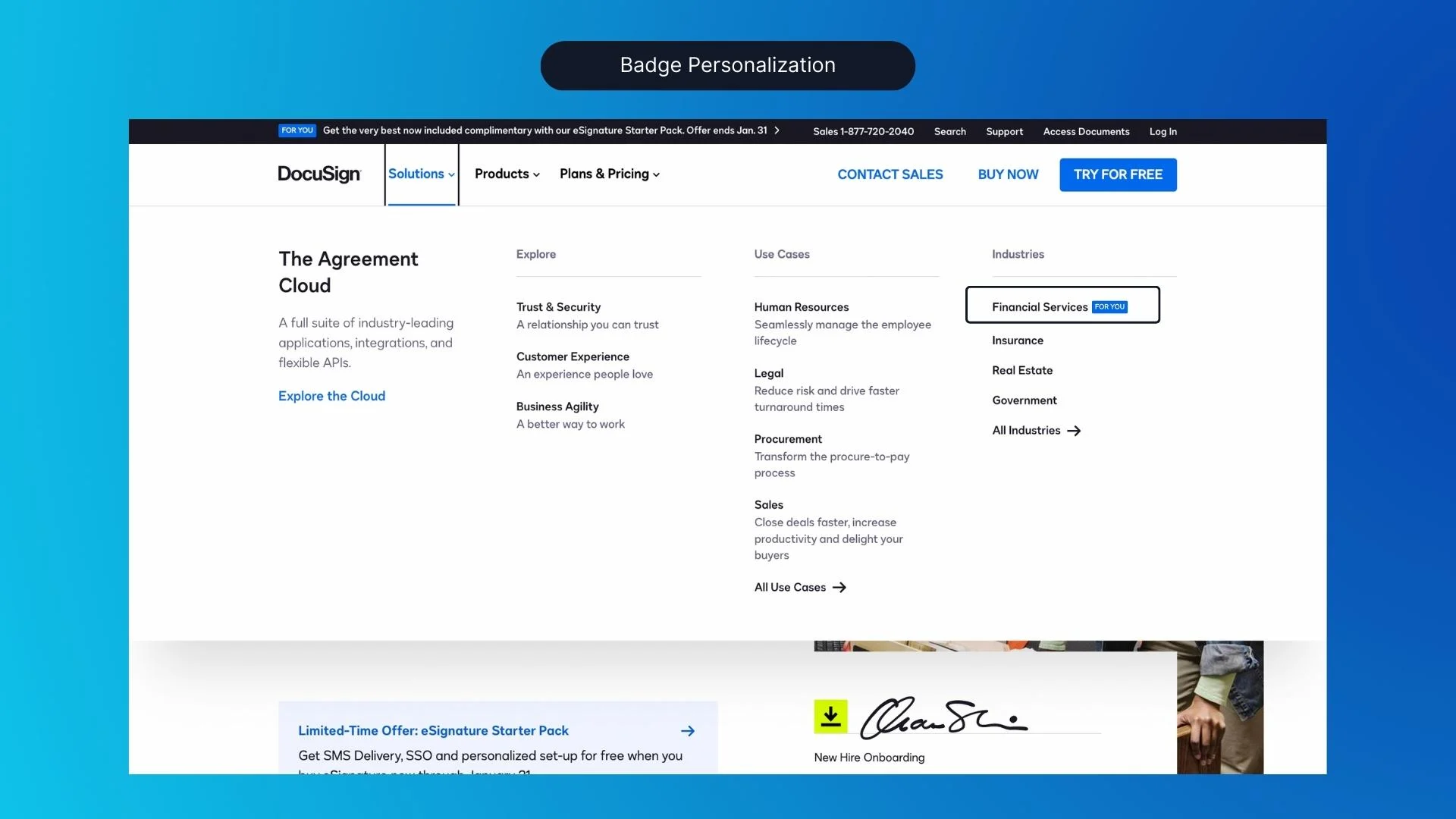

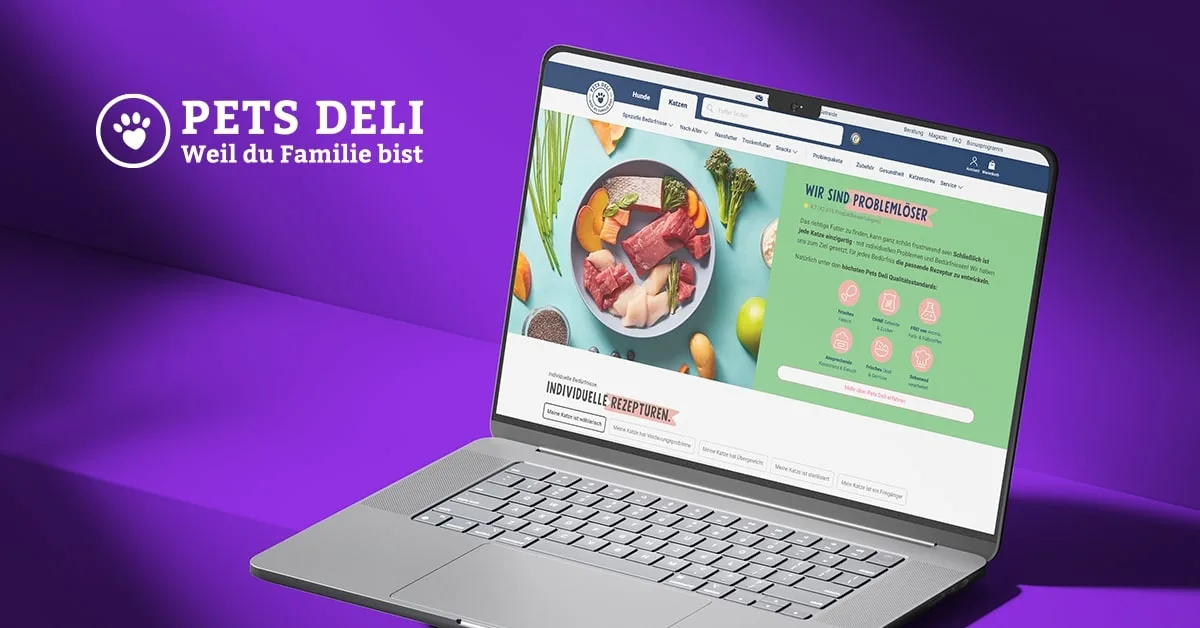
![4 Benefits of Headless A/B Testing [with Examples from Ace & Tate]](https://images.ctfassets.net/a7v91okrwwe3/1rAE9Eod5ybWUHtc9LEMLo/607bdcaf0512ec8f2af0f9f93dbe84f8/Ace___Tate_landscape.jpg?fm=webp&q=75&w=3840)